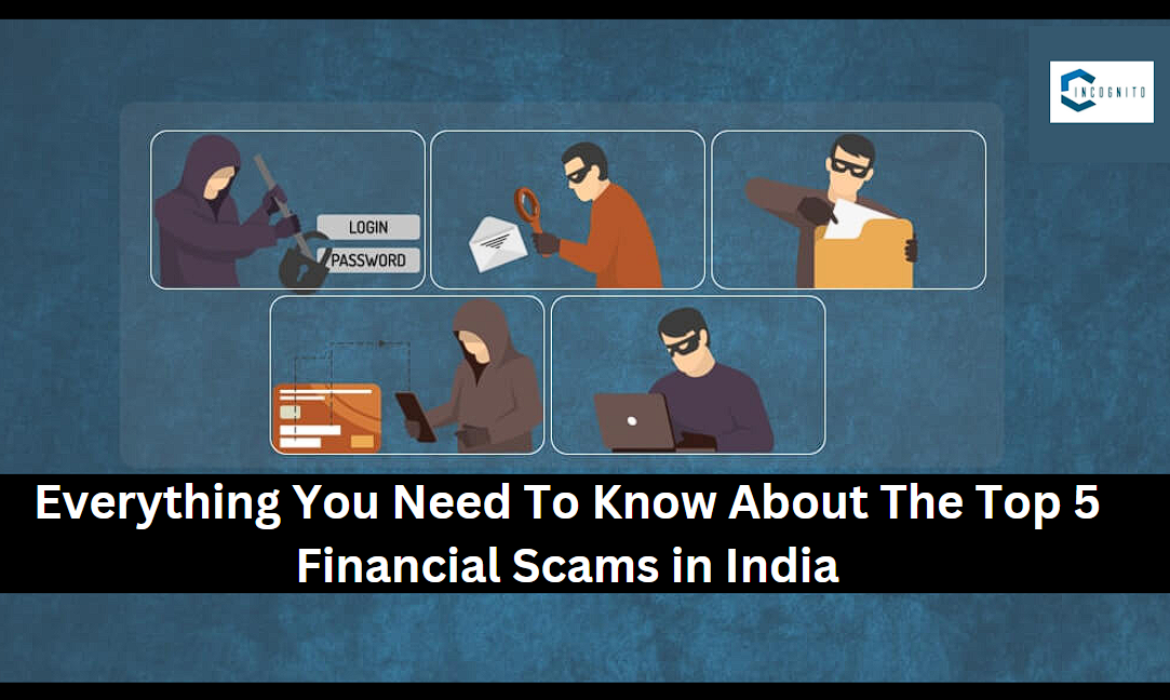
Accounting can go wrong if people either try to cheat or don’t understand the right way to do things. Some of history’s notable accounting and financial frauds have occurred due to failing to follow fundamental principles. Following the International Monetary Fund (IMF), the world throws away up to $2 trillion in corruption.
That is not a small number it is 2% of the world’s GDP. For the past few years, there has been a lot of discussion about how to fight corruption and reduce black money.
Different policies and legislations, including the imposition of Goods and Services Tax and the demonization of high-value currencies (500, & 1000) were some of the actions taken by the Central government in a row to make India free of corruption.
In this article, we will tell you the biggest scams that have ever taken place in India! SO ABOVE ANYTHING ELSE, LET’S START!
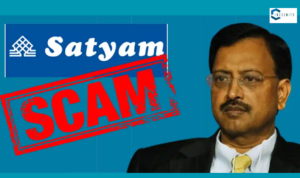
The Satyam Computers Scam
1. The Satyam Computers Scam
| Time-Period | 2006-2008 |
| People-Involved |
|
History:
The scam was disclosed in 2009 when the founder-chairman of Satyam Computers Ramalinga Raju blew the lid off that company’s accounts were disarranged. He revealed a Rs. 7,000 crore accounting scam in the balance sheets. On January 7, 2009, Ramalinga Raju mailed to Sebi and stock exchanges, in which he made a clean breast of inflating the cash and bank balances of the company.
Details of the Scam:
Raju also falsified the books by removing particular receipts and payments that brought forth an overall inaccuracy to the tune of Rs 12,318 crore, following the evaluation of findings of Sebi’s probe. As many as 7,561 false bills were even found in the company’s internal audit reports and were conducted by one sole executive.
Only via these falsified invoices the company’s revenue heightened by Rs 4,783 crore for 5-6 years. The investigation itself carried on for almost six years and discovered that fictional invoices were made to show fake debtors on the Satyam books, totaling up to Rs 500 crore.
Weeks before the scam started to come to light, he made a famous statement saying he felt like he was riding a tiger and didn’t know how to get off without being harmed. Raju stated in an interview that Satyam, the fourth biggest IT company, had a cash balance of Rs 4,000 crore and could make use of it further to raise another Rs 15,000-20,000 crore.
Ramalinga Raju was sentenced with 10 other members on 9 April 2015. The 10 people found responsible for the case are as follows:
- B Ramalinga Raju
- B Rama Raju, his brother and former managing director of Satyam
- Vadlamani Srinivas, former chief financial officer
- Subramani Gopalakrishnan and T Srinivas, former PwC auditors
- B Suryanarayana Raju, another brother
- G Ramakrishna, D Venkatpathi Raju, and Ch Srisailam, former employees
- V S Prabhakar Gupta, former internal chief auditor of Satyam
On December 8, 2014, Ramalinga Raju and three others were sentenced to six months in jail by SFIO.
What Actions Were Taken and What Was the Outcome:
After the scam came into view, the government dictated an auction for the sale of the company in the concern of investors and around 50,000 employees of Satyam Computers.
It was taken by Tech Mahindra and was then retitled as Mahindra Satyam, and was finally combined into Tech Mahindra.
The Satyam case ended up showing that there were financial errors totaling around Rs 12,320 crore, based on Sebi’s investigation.
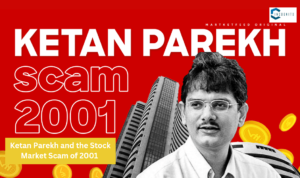
2. Ketan Parekh and the Stock Market Scam of 2001
2. Ketan Parekh and the Stock Market Scam of 2001
Time-Period: 2001
History:
He was a chartered accountant by professional training and had entered into his family’s brokerage business. At the high level of his success, Ketan Parekh was friends with global faces like Kerry Packer and both of them had together introduced a venture capital intending to fund new businesses in India.
Details:
Ketan Parekh was involved in a stock market scam in India from late 1998 to 2001. He targeted small companies with low market value and low trading volume. Parekh invested a lot of money in these stocks and traded them within his own network of companies.
This fake trading made it look like the stock prices were rising, encouraging others to invest and drive prices even higher. Parekh then quietly sold his shares for a profit without drawing much attention, unlike his mentor Harshad Mehta.
He bought big shares in lesser-known companies and inflated their prices through fake trades and collusion with other traders and investors. Companies and promoters often gave Parekh money to boost their stock prices artificially.
For example, Visualsoft’s stock price went from Rs 625 to Rs 8,448, and Sonata Software’s price rose from Rs 90 to Rs 2,150. On March 1, 2001, after the Indian Union Budget was announced, the BSE Sensex dropped sharply by 176 points, leading to a government inquiry.
The RBI refused to clear suspicious pay orders from Parekh related to loans from the Bank of India. Around the same time, brokers opposed to Parekh tried to sell their shares of the manipulated stocks, causing panic.
Parekh sold off his stocks, especially those of GTB bank and MMCB bank, in a large-scale dump after trading hours at the Calcutta Stock Exchange. This led to a stock market crash the next day, causing big losses for institutional investors, including insurance companies and mutual funds.
What Actions Were Taken and What Was the Outcome:
Ketan Parekh was quickly arrested and taken to court. He was banned from trading on the Bombay Stock Exchange for 15 years, until 2017. He was also sentenced to one year in prison for his financial crimes.
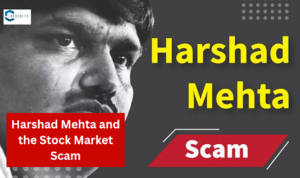
3. Harshad Mehta and the Stock Market Scam
3. Harshad Mehta and the Stock Market Scam
Who was he- Stockbroker from Gujarat
Details:
In the early 1990s, Harshad Mehta acted as a middleman for transactions between Indian banks. He would get funds from the banks and then illegally invest them in stocks on the Bombay Stock Exchange. This made the stock prices go up artificially.
On June 16, 1993, Mehta caused a scandal by claiming he paid Rs 1 crore to then Congress President and Prime Minister P.V. Narasimha Rao as a donation to the party to avoid trouble with the case.
How Did He Manage To Do This:
Harshad Mehta took around Rs 1,000 crore from banks to buy stocks on the Bombay Stock Exchange. His investments caused the market to reach new highs, and retail investors followed his lead, buying stocks like he did.
From April 1991 to April 1992, the Sensex skyrocketed by 274%, rising from 1,194 points to 4,467, the highest annual return ever. Mehta promised banks higher interest rates and asked them to transfer money into his personal account, pretending to buy securities for them.
He used this money to buy shares, driving up their prices. For example, ACC’s stock price went from Rs 200 to nearly Rs 9,000 in just 3 months.
The scam was uncovered when the State Bank of India reported a shortage in government securities.
Investigations revealed that Mehta had manipulated around Rs 3,500 crore.
On August 6, 1992, after the scam was exposed, the market crashed by 72% and stayed down for two years.
On April 23, 1992, journalist Sucheta Dalal revealed Mehta’s illegal activities in a column in The Times of India.
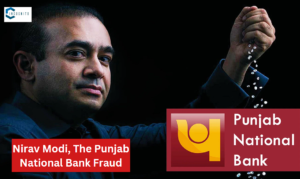
Nirav Modi, The Punjab National Bank Fraud
4. Nirav Modi, The Punjab National Bank Fraud
When this took place: Between 2011 and 2018
About Nirav Modi:
Nirav Modi was born in India and brought up in the Belgian city of Antwerp, the diamond capital of the world, Modi is a third-generation diamond trader. After quitting the University of Pennsylvania’s Wharton School, he entered into the family business of his maternal uncle Choksi at Gitanjali Gems.
Nirav Modi gained fame in the past decade when he became the first Indian to be on the cover of a Christie’s auction catalog in 2010. His Golconda diamond necklace sold for $3.56 million at an auction in Hong Kong.
Summary
Companies acquired by diamond merchants Nirav Modi and Mehul Choksi are declared to have cheated Punjab National Bank (PNB) of around Rs 11,000 crore ($1.77 billion). The fraud was identified in the third week of January 2018, Following the PNB management which talked to the Central Bureau of Investigation on Jan. 29. The agency had captured around 34,000 pieces of jewelry valued at Rs 85 crore from Gitanjali Group, acquired by Nirav Modi’s uncle and jeweler Mehul Choksi, also guilty in this case.
Details:
It started in 2011 with a small amount with a single letter of undertaking (LoU)! Worth around Rs 800 crore. A letter of undertaking is a bond that a bank is liable to repay the loan if the real borrower – in this case, Nirav Modi – fails to do so.
Society of Worldwide Interbank Financial Telecommunication, or SWIFT, is a system to send immediate messages. Once an international bank or an international branch of a bank gets the LoU through the SWIFT message, hand over the loan to the borrower. When the due was not paid in time, more LoUs were allocated on behalf of PNB to balance the payment.
When the borrower didn’t repay the first Rs 800 crore, the bank should have declared a default. Instead, two PNB employees involved in the fraud issued more LoUs, asking other banks to give new loans. This went on until January 5, when Modi’s employees visited the bank and the fraud was discovered. By then, the overdue loans had grown to over Rs 11,000 crore.
PNB was not fully using a Core Banking System (CBS) that could have detected the problem quickly.
PNB started integrating CBS in 2002, but the technology was not fully upgraded by 2012.
What Actions Were Taken and What Was the Outcome:
PNB investigated the case internally, before making any revelation to the public and found junior branch officials had issued LoUs to international branches of Indian lenders, on behalf of firms linked with Nirav Modi and his uncle, Mehul Choksi. The bank guarantees helped the companies get credit from foreign banks. This credit was used to pay for their imports.
After the PNB fraud case, jewelers are having trouble getting money from banks. Banks claim that jewelers misuse the funds, even though not all jewelers do this. The gems and jewelry industry is worth Rs two lakh crore and grows 7-10% each year. On January 31 and February 15, 2018, the CBI and the ED opened separate cases against Nirav Modi, his companies, and diamond jeweler Mehul Choksi due to the PNB fraud.
The CBI has arrested 19 people so far, including Gokulnath Shetty, who used to be the Deputy General Manager at PNB. A Special PMLA court has also issued arrest warrants for Modi and his uncle Choksi, who left the country before the scam was discovered.
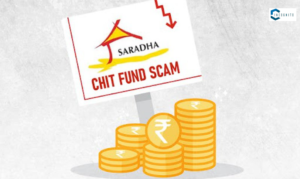
Saradha Scam
5. Saradha Scam
When this took place: Between 2003 and 2011
People Involved: Sudipto Sen (Businessman)
Summary:
The Saradha Group financial scam was a notable financial scam and caused a political disturbance due to the breakdown of a Ponzi scheme operated by Saradha Group, a group of around 200 private corporations that were supposed to be running a collaborative investment scheme widely but inappropriately named as chit funds in Eastern India.
Details:
Sudipto Sen started the Saradha Group in the early 2000s. The Saradha Group was a type of investment scheme that promised high returns. They collected money from many small investors through agents, who got high commissions (over 25%). They raised about Rs 2,500 crore (a huge amount of money). Saradha Group built its image with celebrity endorsements, investments in football clubs, owning media outlets, and sponsoring events.
They expanded to Odisha, Assam, and Tripura, getting nearly 17 lakh investors. By 2009, some politicians in West Bengal started talking about Saradha’s possible fraud. In 2012, the Securities and Exchange Board of India (SEBI) told Saradha to stop taking new money until they got permission.
In January 2013, Saradha’s cash inflow became less than its outflow, a sign of trouble. The scheme collapsed in April 2013. Investors and agents complained to the Bidhannagar Police. Sudipto Sen fled West Bengal and wrote an 18-page letter blaming politicians for his company’s failure. An FIR was filed, and Sen was arrested with his associate Debjani Mukherjee on April 20, 2013.
Findings
Investigations found that the company was using money from investments in places like Dubai, South Africa, and Singapore. Mamata Banerjee’s government created a Special Investigation Team (SIT) to look into the case after combining all the police reports. At the same time, the CBI started an investigation in Assam after the state government handed over the case to them.
The Enforcement Directorate opened cases about alleged money laundering based on the state police reports and arrested several people. The CBI said that the SIT did not give them a diary from Sudipta Sen, which has details about payments to important people and other evidence.
The CBI has asked multiple times for all documents seized by the SIT, including the diary, interrogation reports, pen drives, and material from a bank locker, but has not received them.
The Fallout
- In May 2014, the Supreme Court moved all the cases to the CBI because the scam involved multiple states.
- The SIT, after a year-long investigation, was required to give all case papers, evidence, and arrested suspects to the CBI.
- The CBI questioned more than a dozen TMC MLAs and MPs.
- The CBI arrested Srinjoy Bose, Madan Mitra, and Kunal Ghosh.
- Those questioned included:
- Rajat Majumdar, former TMC vice president and former West Bengal DGP
- Shankudeb Panda, TMC Youth Congress chief
- MPs Satabdi Roy and Tapas Paul
- Former Assam DGP Shankar Barua committed suicide after the CBI questioned him and searched his house.
WHAT ACCORDING TO YOU IS THE BIGGEST SCAM IN INDIA? DO TELL US IN THE COMMENT SECTION!
Read More News or Scam Related Blogs:
Rakesh Jhunjhunwala: Who was this “Big Bull” of the Indian Stock Market?





